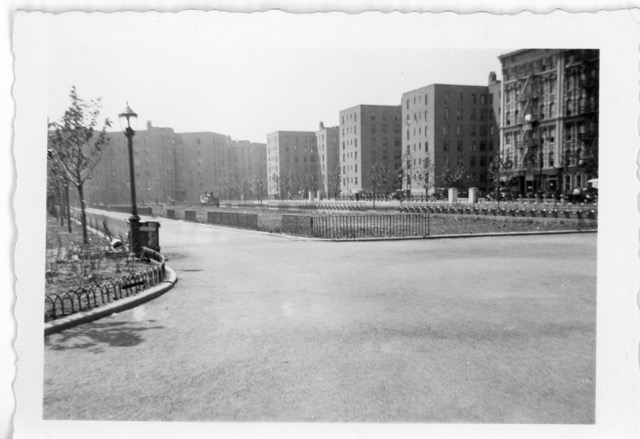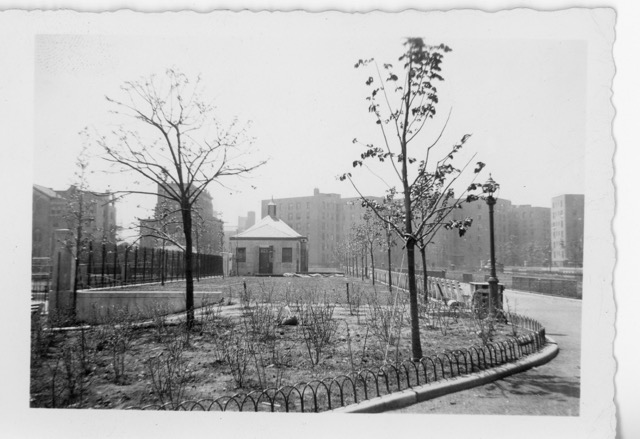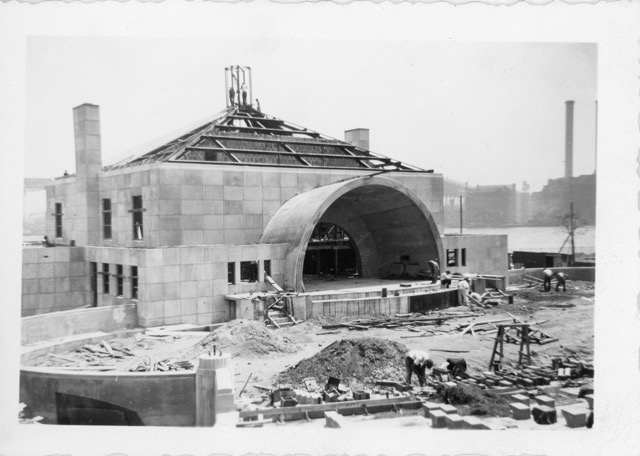Corlears Hook Park, located at the intersection of Jackson and Cherry Streets along the Franklin Delano Roosevelt (FDR) Drive on Manhattan’s Lower East Side, is named after 17th century Dutch landowners, the Van Corlear family, and the geographic bend in the shoreline that had the shape of a hook.
Originally marshland that was used by the Lenape tribe to land their canoes, Dutch settlers of the mid-1600s swiftly took advantage of the area’s gradual coastal incline for loading and unloading of transport vessels. On February 25, 1643, the Dutch Governor Willem Kieft launched simultaneous attacks on Weckquaesgeek and Tappan encampments at Corlears Hook and at Pavonia on the Hudson River. Between both sites, 120 native men, women and children were massacred that night. At the Battle of Brooklyn in 1776, the British landing and advance upon General George Washington’s fleeing Continental Army was impeded by a series of hastily erected earthen barricades on the site. In 1814 the Corlear neighborhood, as it was briefly called, underwent renovations as part of a relief project for thousands of Irish immigrants. The site’s hills were leveled for use in landfill along the waterfront, making possible the busy docks that soon encouraged industrial and residential growth in the area.
In the 1880s, with the rising tide of immigration, rapid local industrialization, and overburdened tenements, many pressed for the creation of a nearby park. Though the land for Corlears Hook Park was purchased by the City in 1893, the park’s development was not completed until 1905. By the late 1930s, the park’s broad, tree-lined promenade held a comfort station, playground, and baseball diamond, but, when the city began developing the East River’s shoreline in tandem with President Franklin D. Roosevelt’s (1882-1945) Depression-era Works Progress Administration, Corlears Hook Park was reduced in size. Directly reacting to the construction of the Franklin D. Roosevelt Drive, Parks Commissioner Robert Moses (1888-1981) began to draw up and execute plans to take advantage of the new landfill across this highway.
Over the next few years Moses’ addition of several Parks properties along the entire eastern coastline of Manhattan, including East River Park, began to revitalize the Lower East Side. Though Corlears Hook Park initially lost a large portion of land to the FDR Drive, the addition of the adjoining 57 acre-long East River Park in the 1940s granted the East Side neighborhoods an even larger area in which to walk and play.
Connected by footbridges and winding paths, Corlears Hook Park and the adjoining East River Park offer softball fields, tennis courts, skateboarding areas and a public performance space. The two parks are part of the Manhattan Waterfront Greenway, a 32 mile route of connected parks along the shoreline of Manhattan. Click here for more park history.
Learn more about the Park's Hooker history and Pirate Gangs.
Learn more about Thomas W. Commeraw, the Potter that called Corlears home.
Thanks to Lee Berman for sharing these original family photos of the park in the 1930's.



